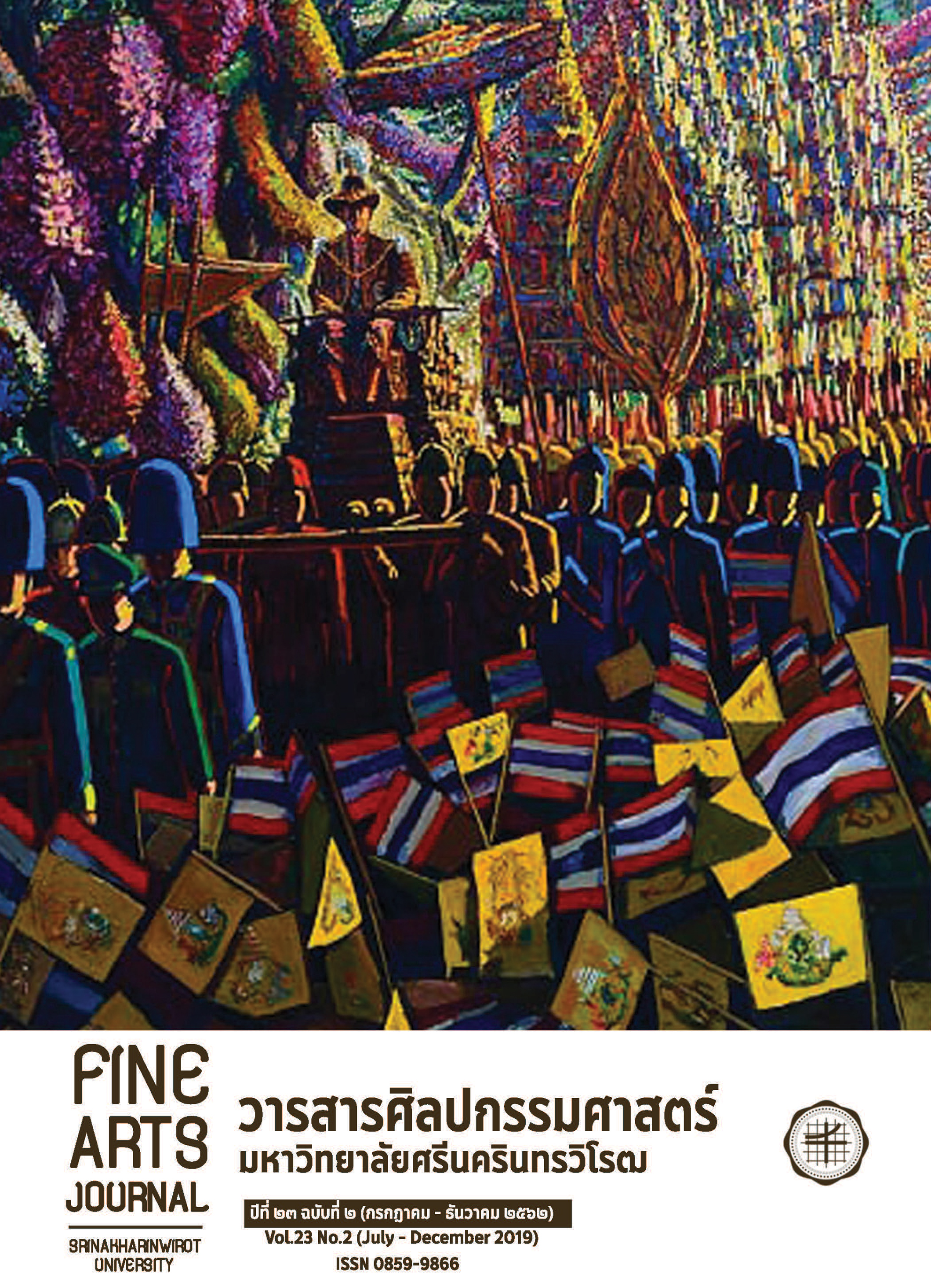H.R.H. PRINCE NARATHIP PRAPANPONG’S LYRIC DRAMA: THE INTELLECTUAL TREASURE OF PERFORMANCE FROM “ROYAL COURT” TO “FOLKWAYS”
The intellectual treasure of performance from "Royal court" to " folkways"
Keywords:
Lyric Drama, Predalai Drama, H.R.H. Prince Narathip Prapanpong's Drama, DuriyapraneetAbstract
The current study aims to investigate H.R.H. Prince Narathip Prapanpong's Lyric Drama biography by obtaining data from textbooks and interviews. The obtained data are analysed to find the development processes of H.R.H. Prince Narathip Prapanpong's Lyric Drama, which is also known as "Predalai Drama". The analysis shows that the drama was originated in the royal court and then spread out to ordinary people. This makes the lyric drama gained more popularity at that time. After that, the lyric drama was disappeared from the royal court because the Predalai theatre was close. Many actors and actresses moved out from their old place and start created their own theatres again. In each theatre group, they still used the original lyric drama patterns like those in royal court such as lyrics, singing method, singing pattern, refrain lyric, refrain singing pattern and etc. Later, the lyric drama became deteriorated and not many lyric dramas were popular anymore. There was, however, one more Thai music institution named "Duriyapraneet" that still performed and preserved the original lyric drama following Predalai theatre style. The Duriyapraneet Thai Music Institution's lyric drama group was organized by Mrs.Sudjit Duriyapraneet. Nowadays, the lyric drama is neither famous nor popular like those in the past, but the Duriyapraneet Thai Music Institution still keeps practicing the original style of performance.
Downloads
References
ระดับปริญญาบัณฑิต). คณะศิลปศึกษา สถาบันบัณฑิต-พัฒนศิลป์.
จันทิมา พรหมโชติกุล. (2518). วิเคราะห์บทละครร้องของพระเจ้าบรมวงศ์เธอ กรมพระนราธิป ประพันธ์พงศ์. (วิทยานิพนธ์ปริญญา
มหาบัณฑิต). กรุงเทพมหานคร: มหาวิทยาลัยศรีนครินทรวิโรฒ.
ณรงค์ เขียนทองกุล. (2541). บางลำพู. บ้านบางลำพู ชุมชนดนตรีไทยชาวบ้านที่เก่าแก่และ ยิ่งใหญ่ของกรุงเทพ, หน้า 11-29.
กรุงเทพมหานคร: มติชน.
ประเทิน มหาขันธ์. (2556). การอนุรักษ์เพลงละครร้อง. ชลบุรี: มหาวิทยาลัยบูรพา.
พูนพิศ อมาตยกุล และคณะ. (2556). ละครร้อง ประวัติความเป็นมาในรอบร้อยปี. หนังสืองาน พระราชทานเพลิงศพ ครูสุดจิตต์ ดุริย
ประณีต อนันตกุล, หน้า232-274. กรงเทพมหานคร: นานาสิ่งพิมพ์.
มาลินี ดิลกวณิช. (2543). ระบำและละครในเอเชีย. กรงเทพมหานคร: มหาวิทยาลัยธรรมศาสตร์.
ราชบัณฑิตยสถาน. (2545). สารานุกรมดนตรีไทย ภาคคีตะ-ดุริยางค์. กรงเทพมหานคร:สหมิตรพริ้นติ้ง.
วิมลศรี วิมลศรี. (2555). นาฏกรรมและการละคร. กรงเทพมหานคร: สำนักพิมพ์แห่งจุฬาลงกรณ์มหาวิทยาลัย.
สุจิตต์ วงษ์เทศ. (2541). คำนำคดี. บ้านบางลำพู ชุมชนดนตรีไทยชาวบ้านที่เก่าแก่และยิ่งใหญ่ของกรุงเทพ, หน้า 11-29. พิมพ์ครั้ง
ที่ 1. กรงเทพมหานคร: มติชน.
สุนันทา โสรัจจ์. (2515). โขน ละคร ฟ้อนรำ การละเล่นพื้นเมือง. กรงเทพมหานคร: พิฆเนศ.
สุมนมาลย์ นิ่มเนติพันธุ์. (2532). การละครไทย. กรงเทพมหานคร: ไทยวัฒนาพาณิชย์.
สุรพล วิรุฬห์รักษ์. (2554). นาฏยศิลป์รัชกาลที่ 5. กรงเทพมหานคร: สกสค.






